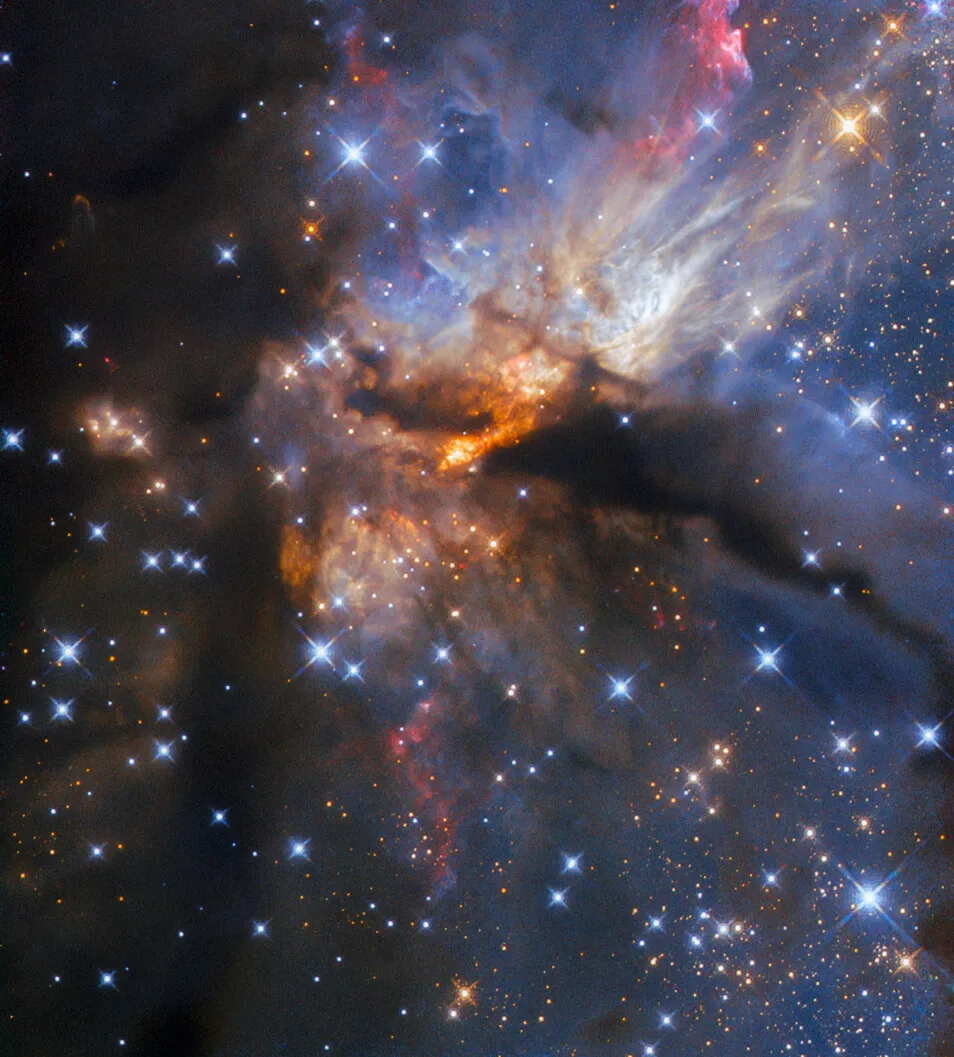Hubble snaps hotbed of high-mass star formation

This glimmering region called G35.2-0.7N is a hotbed of high-mass star formation. Captured by the Hubble Space Telescope's Wide Field Camera 3 (WFC3), it lies around 7,200 light-years from Earth in the constellation Aquila.
The stars that form in this region are so massive that they will end their lives as destructive supernovae. The powerful protostellar launching toward us is the source of the spectacular light show. Protostellar jets are enormous, collimated beams of matter ejected from protostars - very young stars surrounded by gas and dust.
The rich dust clouds that are responsible for producing these giant stars are blocking the light from Hubble's view. The star and the jet of material it is emitting are visible near the very center.
"The small, bright orange streak is a cavity in the dust carved out by the ferocity of the jet as it streams towards us. By breaking through its dusty cocoon, the jet reveals light from the protostar, but there is still so much dust that the light is “reddened” to a fiery orange. The massive protostar lies at the very lower-left tip of this cavity," NASA wrote in a post.
Jet-setting through a star formation hotbed!The glimmering, star-forming region seen in this #HubbleFriday view is called G35.2-0.7N. The spectacular light show is caused by a powerful jet of matter ejecting from a very young star: https://t.co/VtDTuYRE89 pic.twitter.com/hLEwFDqZCy
— Hubble (@NASAHubble) October 13, 2023
Hubble's WFC3 was installed by astronauts during Hubble Servicing Mission 4 in 2009. With its ability to see the universe in three broad regions of the spectrum - ultraviolet (UV), visible light, and near-infrared (NIR) - the instrument studies a diverse range of objects and phenomena, from young and extremely distant galaxies, to objects within our very own solar system and exoplanets (planets beyond our solar system).
WFC3's sharp resolution and panchromatic view allow astronomers to study stars and galaxies farther back in time than ever before.
- READ MORE ON:
- Hubble Space Telescope
- protostars
- G35.2-0.7N










